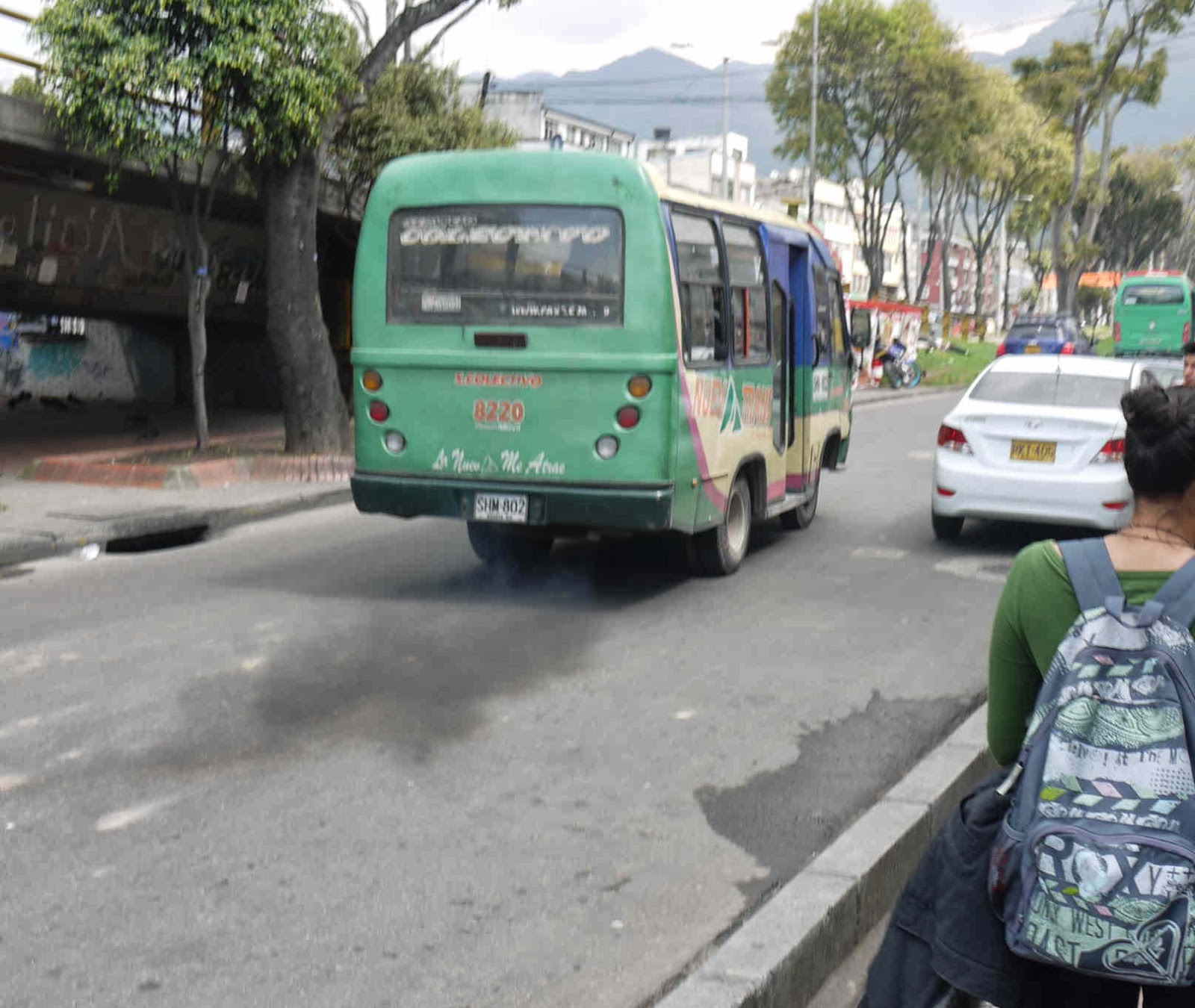 |
| A bicimotor roars down Ave. Jimenez, the Eje Ambiental, in downtown Bogotá. |
 |
| No pedaling needed: A motorized bicycle on Ave. Septima's bike lane. |
But the owners of such 'bicimotores,' which are proliferating in Bogotá, are convinced that their cheap, mini motorcycles are, actually, just bicycles.
Motorized bicycles may provide cheap transportation, but they also generate problems for real cyclists. Bicimotores are noisy, can belch out more pollution than a car, and roar along at speeds close to conventional motorcycles.
A bicyclist using a bike lane as a refuge from car traffic, or - even worse - a pedestrian walking along a sidewalk, shouldn't be subjected to one of these machines.
 |
| What doesn't fit here? A motorized bicycle in a Bogotá bike shop. |
I've encountered bicimotores on Bogotá's Ciclorutas and even La Ciclovia, where they contradict La Ciclovia's of promoting health and physical activity.
Bicimotores may have a legitimate role as cheap transportation. But, as motorized vehicles, they should be subject to motor vehicle laws, as well. And, they should stay out of bicycle-only areas.
Fortunately, an attorney with Bogotá's legal office recently issued an opinion reaching the common sense conclusion that bicimotores are not bicycles and therefore may not use the city's bike lanes, (and, presumably, not La Ciclovia either).
But those of us living in Bogotá know there's a huge gulf between what laws say and what really happens. Will the police do their job here?
 |
| A legal opinion from Bogotá's legal office concludes that motorized cycles may not use bike lanes. |



















































